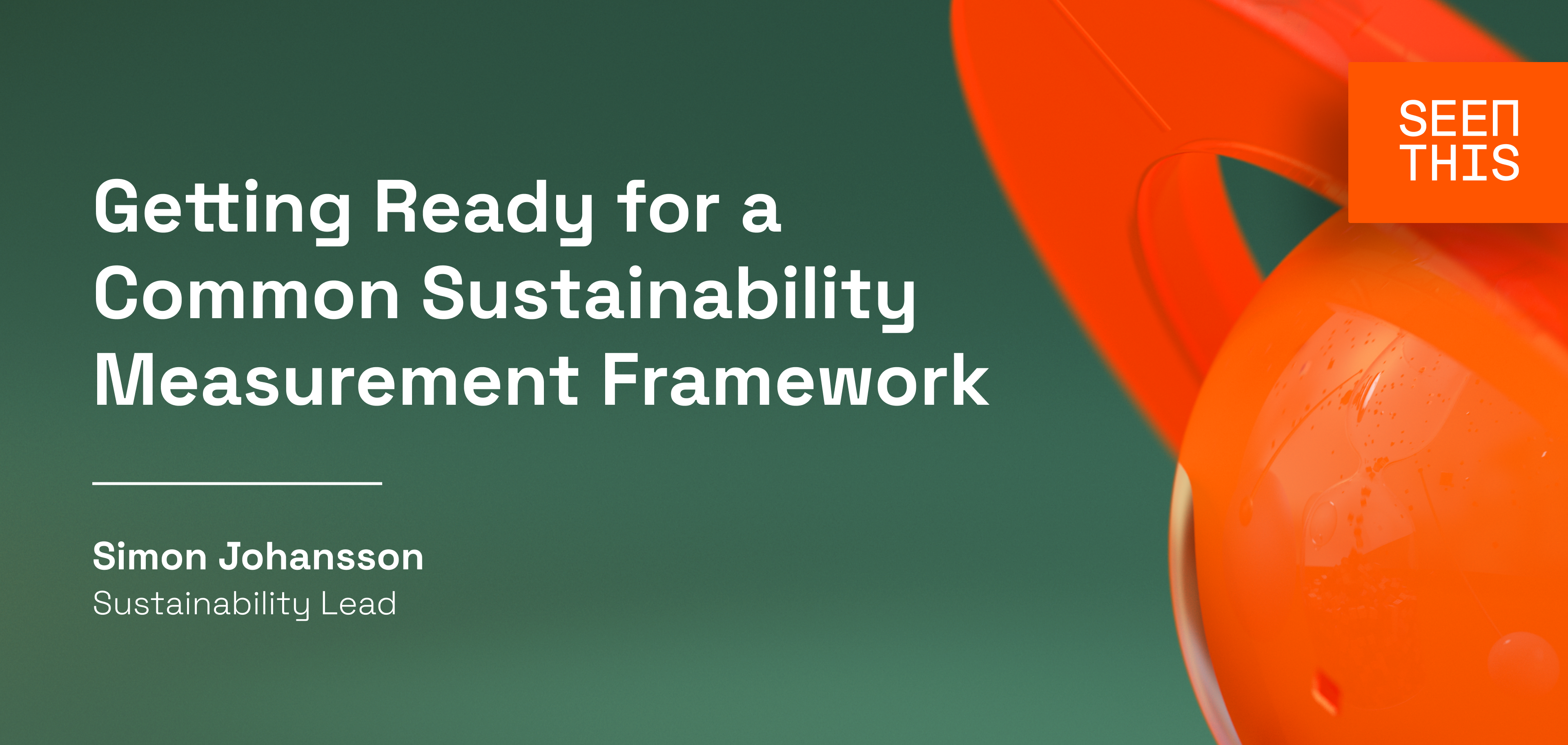Getting Ready for a Common Sustainability Measurement Framework

The World Federation of Advertiser’s Global Alliance for Responsible Media (better known as GARM) is collaborating with Ad Net Zero to create a usable framework for Media Sustainability. In January, GARM announced that there will likely be something available this summer that will serve as a common, voluntary solution for measuring emissions across the advertising industry.
Ultimately every company in the advertising ecosystem has to report in a way that can roll up to their clients, the brand companies. For those with clients situated in Europe, adherence to the new EU Corporate Sustainability Reporting Directive is expected. Effective this year, the directive mandates reporting on operational scope 1 and 2 emissions, alongside scope 3 emissions, which encompass those of all partners in the entire value chain, including digital advertising. Comparable data will facilitate reporting but also simplify partner selection. Not only that, emissions measurement needs to align with campaign metrics so that advertisers can understand how emissions reductions impact campaign outcomes.
What we don’t want to happen in 2024 is that advertisers and their partners all go off in different directions, using incompatible measurement frameworks that make it more difficult to come together around a common approach. Advertisers need to consciously choose their path using a few important guiding principles to ensure the industry's successful transition from discussing measurement to actively reducing emissions. It's time to shift our focus towards implementing strategies that drive tangible emission reductions.
Choose Open Source There is really no good argument for having “walled gardens” of sustainability data or proprietary, black-box measurement approaches to emissions reduction. Unlike pure ad performance metrics, emissions reduction is a shared goal across the industry. Brands don’t have to publicly state the results of their ad campaigns, but they will have to publicly state their annual emissions. This means that brands need to get emissions data from across their supply chains, from agencies to ad-tech to publishers and production companies. To aggregate this scope 3 data effectively, a single unified standard is needed.
The standard should be open-source to ensure transparency, enabling everyone to understand its workings and contribute to its enhancement. It should be collectively owned by the industry, free from profit motives. This inclusive model promotes engagement from all stakeholders, fostering a collaborative effort to continually refine and evolve the framework over time.
Get Granular It is important that the GARM framework is detailed enough to allow advertisers to do two important things. First, it must allow for different levels of maturity, making it possible to assess emissions hotspots with imperfect data, while allowing more precise calculations using granular data. It however needs to be clear if averages or actuals have been used to allow fair comparisons of results. The other important element is that the framework needs to be holistic, but given the diversity in value chains across organizations in our industry, the scope of the life cycle naturally varies. To address this, we should adopt the broadest interpretation of the 'cradle to grave' approach and define every step across the life cycle stages in a modular framework. Such a framework allows for a unified yet flexible assessment method. The use of modules can be tailored to be relevant for individual organizations, ensuring that the assessment is both comprehensive and applicable across diverse life-cycles and value/supply chains. For example, data transfer related emission should include direct energy and embodied emissions from data centers, CDN servers, network infrastructure and devices, considering hosting, data transfer in and out, rendering on screen and other processing.
Precise direct measurement of emissions at the source is ideal but often unfeasible, necessitating the use of accurate, practical proxies for assessment. These proxies would vary by module, such as using data transferred for network emissions and view time for device rendering. The chosen proxies must provide the incentives for long-term emission reduction, aligned with our global targets.
Align With The Early Leaders SRIxAD and GroupM have both developed frameworks that are great precursors to the GARM framework that will come out later this year. Both frameworks help advertisers with relatively granular calculations across their supply chain, and encourage standards and transparency.
SRIxAD is adapted for different maturity levels, thanks to the inclusion of a database with conservative averages it allows calculations based on three levels of data granularity, ranging from only basic campaign info to detailed server impact data. Meanwhile, GroupM’s Ad GHG emissions methodology also encompasses non-digital advertising channels. It aims to use real vendor data, but has been complemented with pre-populated estimates for early assessment.
Our industry needs to make sure that GARM’s recommendations align with the points above. But, rather than wait and see, advertisers should already start applying the best practice frameworks out there. Brands will then get comfortable with frameworks that are compatible with the entire advertising ecosystem, and will get a head start in understanding how emissions measurement (i.e. emissions reduction) intermingles with ad performance. The joint experience will guide the industry’s alignment forward and make sure that a future common framework works in practice.
Ultimately, a framework is only as good as its ability to drive emissions reduction while providing insight into effects on business performance. By evaluating different types of media, like video or image, across channels within the same framework using the same principles, advertisers and their partners start to see how the metrics we create as outputs are more than mere data points; they evolve into key performance indicators used for benchmarking and optimization. Understanding the implications of these sustainability metrics and their interplay is crucial.
Advertisers will only succeed in both lowering emissions and hitting their campaign performance goals if they consider the intersection of sustainability and campaign performance by effectively connecting carbon cost with value creating business outcomes.
Feb 21, 2024





